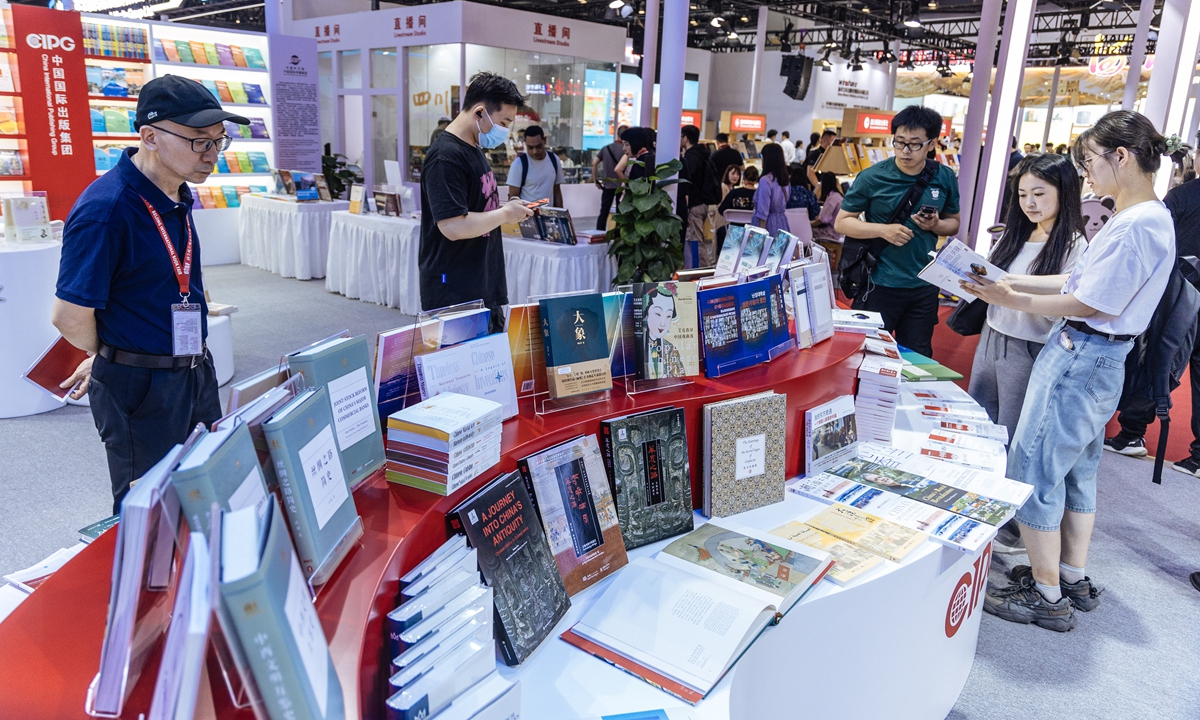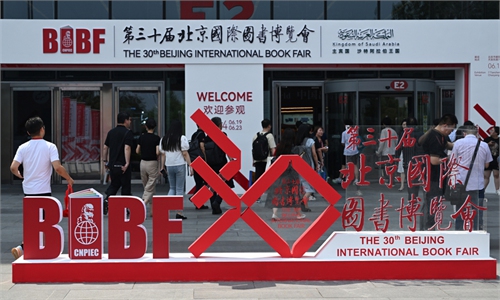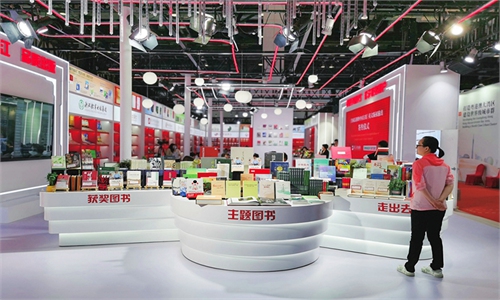ARTS / CULTURE & LEISURE
Cross-border publishing brings international stories to China and vice versa
From page to people

Readers pursue books at the Beijing International Book Fair in Beijing on June 18, 2025. Photo: Li Hao/GT
Amid the quiet rustle of turning pages and steady rhythm of international exchange at the 31st Beijing International Book Fair (BIBF), UN Deputy Secretary-General Melissa Fleming shared a true story with the Global Times on Wednesday that had stayed with her for years as she launched her new book at the fair.The BIBF opened Wednesday at the China National Convention Center in Beijing. The fair features over 1,700 exhibitors from 80 countries and regions, showcasing 220,000 high-quality Chinese and international books. Malaysia served as the guest of honor, according to the Xinhua News Agency.
"The global publishing industry is currently undergoing a significant phase of digital transformation alongside cultural diversification," Sheikh Faisal from the Malaysian Book Publishers Association, told the Global Times on Wednesday.
"We aim to promote cross-border publishing of outstanding works and look forward to joint innovation in digital and educational publishing, including e-book development and the creation of online learning resources," he said.
According to Faisal, they hope to work together with their Chinese counterparts to further expand into the South Asian market and foster cultural connectivity and people-to-people bonds.
Meanwhile, Chinese books have found new pathways to go global, according to the Chinese publishers at the fair.
Stories inflow
Drawn from her time working with the UN Refugee Agency, Fleming's story recounts the experience of Doaa, a 19-year-old Syrian girl who survived a shipwreck in the Mediterranean by floating on the sea for four days and nights, while clutching two infants. A total of 500 refugees perished in that incident, and she was one of the few survivors.
"Not only did she survive, but she also managed to keep two babies alive during those harrowing days," Fleming said.
"On this international platform where books serve as a medium, stories become the most direct form of communication between countries."
Fleming included this story in her new book A Hope More Powerful than the Sea. She believes that a voice can break cultural barriers and resonate globally. Now, the book has been translated into more than 20 languages, and a youth edition has been released in China.
Fleming reflected that the spread of this story is not just about telling one person's fate, but about advocating understanding among people.
Beyond Fleming, Federico Roberto Antonelli, director of the Italian Institute of Culture, shared a different perspective on how culture is recognized.
On Wednesday, he introduced two books selected by the Italian side under the ongoing China-Italy literary translation initiative: One is a collection of poems by the Enlightenment poet Parini, and a lesser-known scientific work by Galileo Galilei.
"Poetry has had limited translation and introduction in China, while Galileo, as a symbol of Italy, deserves broader understanding in the Chinese-speaking world," he said.
As translation efforts deepen between countries, publishing houses are also exploring new ways to bring cultures closer.
Miho Bando from the Japanese publishing company IPS focused on "cultural exchange" through specific books in manga and literature.
Many young Chinese people's interest in Japanese culture has exceeded expectations, especially showing strong enthusiasm for music-themed manga and similar genres, Bando said.
"This cross-cultural passion for reading reflects how the younger generations in China and Japan are building resonance and deepening understanding through popular culture," she noted.
Diverse pathways
Ma Yuanyuan, an editor with the People's Literature Publishing House, told the Global Times that currently the pathways for Chinese books to "go global" are increasingly diverse as more original content with modern narrative appeal resonates well with younger readers.
In addition to Chinese classics and traditional culture, Chinese animation, serious literature and online novels together form a diverse pathway for Chinese books to go global, Ma said.
Works by contemporary Chinese authors are also increasingly favored by international publishers. For example, books written by Jia Pingwa and Tie Ning have been translated into English and have attracted attention overseas.
Countries such as Vietnam and Thailand have shown strong interest in Chinese online literature, while Russia in recent years has notably intensified its efforts to introduce serious Chinese literature, she noted.
Literature, especially graphic novels and non-ideological texts, often more easily build emotional connections across cultures.
Works that focus on issues such as women's experiences, such as Like the Snow, Like the Mountain, are also gaining increasing popularity in the global publishing world, Ma added.
On Wednesday, the Beijing-based New World Press held a launch ceremony for its new book Key Words to Understand China: Chinese Modernization in 15 languages.
The book helps overseas readers better understand China's path to modernization and its vital significance in building a community with a shared future for mankind.
Xiao Jieru, an editor with the SDX Joint Publishing Company, told the Global Times that the pace of international dissemination of original Chinese academic works has accelerated.
"We hope that through sustained academic output, the world can gain a deeper understanding of contemporary China's research achievements, while also contributing to the development of a distinctly Chinese academic discourse system," Xiao noted.



